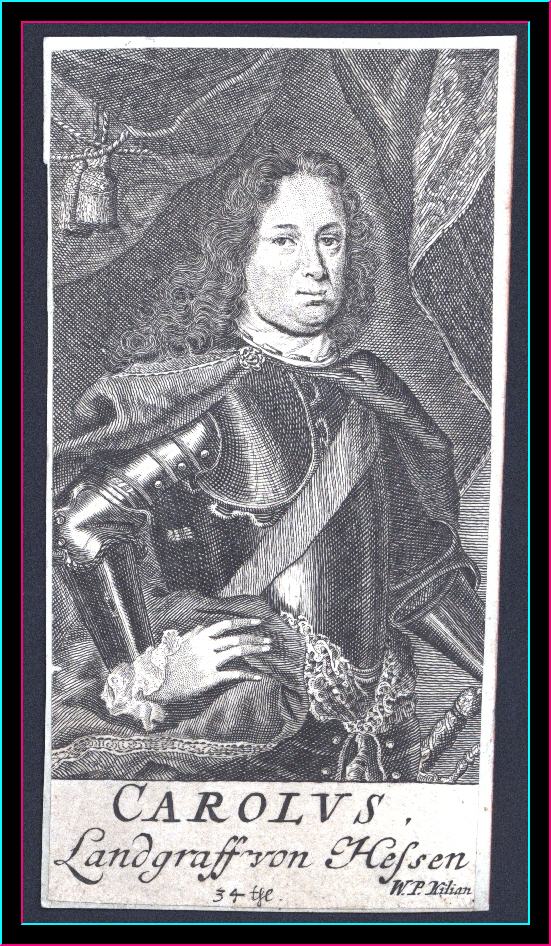|
The
correspondence between Leibniz and Teuber continued. From Hanover, on
3rd July 1716, Leibniz wrote a letter to Teuber informing him of his visit to Zeitz to clear up the remaining problems connected
with his calculator, which was a marvelous invention of the time. His calculator performed flawlessly doing all sorts of mathematical
operation. - Addition, subtraction, multiplication, and division. Moreover, his calculator could also extract a root. He told
Teuber in the letter that he was going to visit Duke Moritz Wilhelm. According to the court diary, Leibniz arrived on 10th
July 1716 and Duke Moritz Wilhelm treated him as the guest of honour. Leibniz spent a week there, amending his calculator,
which had been designed there, and on his way back paid a brief visit to Orffyreus again.
On 3rd August 1716 Leibniz wrote to Teuber: “I spoke with Mr. Orffyreus, who is about to move
to Kassel. He has high hopes that, with the support and authority of His Serene Highness,
many eminent princes can be approached and that he will be able to get a just reward. But to achieve this, he should allow
the machine to run for as long as two weeks.”
Leibniz left Zeitz on 17th July. By that time, he learnt that Orffyreus was moving to
Kassel. Leibniz was optimistic that after the construction of the new wheel, Orffyreus
would be able to reveal of the secrets of the machine and get his reward, as difficulties would be straightened out with help
of Count Karl. He hoped that he could also contribute in further development of machine. Besides, he would have chance
to deal with theoretical aspects of the problem which in turn might help him to build up a new theory on nature of Vis Viva.
Unfortunately, things did not happen as Leibniz expected. His participation was prevented by his untimely death on 14th
November 1716. He passed away at the age of 70. It was a big personal loss to Orffyreus as he lost further support of Leibniz
for his invention. Leibniz’s authority, knowledge and his obvious interest and support were vital to Orffyreus.
Leibniz’ death put an end to the possibility of recognition of perpetual motion in mainstream natural philosophy.
Leibniz was a respected scientist and perhaps the most acknowledged on the Continent, if he had lived longer, there possibly
perpetual motion would have been established in science as a valid thing. It was a turning point for Orffyreus. Though
prospects were bleak, Orffyreus did not lose courage.
During
the same period, Count Karl Landgrave of the Hesse- Cassel [i], much interested in science of
mechanics, came to know about Orffyreus and his wonderful wheel. Leibnitz also recommended Bessler to Count Karl for the sponsorship
of his invention. Count Karl was a rich and royal elite so was able to help Orffyreus’ work substantially. At this time,
Count Karl, was 62 years old and was living at Weissenstein Castle at Hesse-Kassel. Though Count Karl ruled over one of the tiny quasi-independent states which were
numerous in that of Germany’s development, leading powers in northern Europe
well recognized him as a stead fast ally in the many wars which took place at his time. He had personal and political
association with the kings of England, Poland, Prussia, and Sweden He negotiated
at high levels on several political issues. He was a successful ruler. Conditions of the Hesse-Cassel were poor
before he came to power. His small country became well-off due to his mercenary army which could be hired from him by
other states at war - at a considerable price, of course. In England it was the trading of slaves and other colonial produce that proved to be the most profitable of
businesses. Count Karl gained his money and respect by equipping and hiring mercenaries.
Count
Karl had spent nearly all his life with warfare but in the latter part of his life he turned to the arts and sciences. He
understood importance of science and technology to develop industry. He worked hard, encouraged scientist, patronized
them, engaged them in many large building projects which were successful and contributed a lot to the development of the state
and as a result, when he had died, he left Hesse -Cassel in an excellent financial position.
Count
Karl was very popular for his collection of the latest scientific instruments. Among these were various unusual clocks
based on rolling ball mechanism, erroneously called as perpetual mobile. He purchased one such perpetual mobile from
Cassipani, inventors of several unusual clocks during his visit to Italy between December 1699 and April 1700. We can therefore see that the Landgrave had a technical vein.
He exhibited numerous machines, devices and other things of technical interest. Many eminent scientists living in his
time acknowledged his merit. Gottfried Leibniz and Christian Wolf were among his admirers.
The
monarch took an interest in technology throughout his life, in so much as he, a devoted Protestant, had invited Huguenots
who were exiled from France to his own country.
Among those arriving at court was Denis Papin, who had achieved great merits in the development of the steam engine. The Count
Karl patronized Denis Papin, inventor of steam engine. . Papin had moved to Kassel in 1695, where he carried out a series
of famous experiments with the help and support of the Landgrave. He became Professor of Mathematics at the University of Marburg, and remained in
the Landgrave’s services for 20 years. Papin had been a collaborator with Huygens in Paris
and Boyle in London. He invented the safety valve and an early form of pressure cooker. Papin
could not carry out his experiments with the steam engine in the court for very long because Desagulier soon claimed that
he invented a better steam engine which really proved to be better than Papin’s. In his castle, Count Carl installed
the first steam engine in mainland Europe. It had the simple task of raising water for the cascade at the front of
his castle – much to the astonishment of the public.
Count Karl Offers Orffyreus
A Post of Councilor (1716)
When Count Karl learnt about Orffyreus and his wheel performing mechanical wonders, never done before,
he decided to see truth of his machine and support Orffyreus. Orffyreus was already struggling a lot in finding some support.
The inventor was fortunate in securing count Karl’s support. It is also reported by few authors that Count Karl also
bailed him out and offered him lodging in his castle. Karl possessed money as well as position or influence - poor Orffyreus
had neither. In 1716, Prince Karl took Orffyreus under his patronage. Cont Karl was kind enough to offer Orffyreus a
post of councilor, which Orffyreus gladly accepted though his duties were of a kind ill suited to his aptitude for the perpetual
motion. He then became Councilor Orffyreus. He seized on the opportunity that came to him from providence. Karl provided
him with the resources to build his largest wheel. This was a fortunate break for young Orffyreus.
Author
of the book "Forbidden Inventors", George Egely writes:
“New
opportunities and new horizons opened up when Orffyreus was employed in the service of Karl the Landgrave of Hesse-Kassel,
the richest and most distinguished Lord. …..This was the Golden Age for Orffyreus, up until the Karl’s death at
the age of 76, in 1730. The Landgrave paid great attention to his country and its commerce. For this reason he set up a Commercial
Chamber, where he offered a job to Orffyreus. Orffyreus became a Commercial Councillor with an annual payment of 300 Thalers,
which was not a small sum at that time. He thus obtained work, payment and
rank.”
Now Orffyreus had workshop, tools, and an influential sponsor. It provided an atmosphere where his natural
mechanical and scientific talents could flourish. Orffyreus was a poor man of humble origin and surroundings. The obstacles
confronting Orffyreus however, were nearly insurmountable because he was not formally educated and trained, he had no scientific
status or prestige, and so his ideas faced constant ridicule
In
course of his researches, he met with many difficulties. Nevertheless, his ideas were sound and far advanced of his
time. With great perseverance, he continued his scientific contemplation, which culminated in the various devices based
on perpetual motion. He had no greed for the money but he needed a financial back up to carry on his other experiments
and develop his perpetual motion machines to perfection so that it could be used to drive the carriages in his time and also
fulfill his dream of running an institute “ Fortress of God ”*.
Orffyreus'
connections in scientific world were not strong. With help of Count Karl he raised his hopes to enter into scientific world
to get some position on the strength of his mighty invention. In the beginning, he was not able to decide whether he
should sell his invention to any one or petition legislature of Hesse Castle for exclusive rights to use his perpetual motion machines in mining, pumping
and carriages in those states. The scheme of using steam engine to pump water to a main overhead reservoir to operate
a water wheel was too cumbersome and inefficient. He wanted to replace it with his perpetual motion machine and surprise the
world that his acumen was superior to Edward Somerset, Denis Papin and Desoglier- all who developed a steam engine to make
a position in scientific world. Perhaps Count Karl refused that part of petition concerning use of Orffyreus machine
in carriages, on the ground that the idea was so preposterous that he was not able to waste his time giving it a serious consideration,
although there was no theoretical basis with which to prove it. With help of Karl and Leibniz, Orffyreus then pursued other
alternative to sell his invention.
Count Karl had a large family. On 21 May 1673, Karl married his first cousin Maria Amalia of Courland (1653–1711), daughter of Jacob Kettler, Duke of Courland. They had seventeen children, 12 sons and 5 daughters.
After 38 years of marriage, his wife Maria Amalia died in 1711. Karl’s 17 children married into a number
of good courts: one of his sons, for instance, became King of
Sweden. In his last years, the Landgrave could not enjoy peace as his two wives were always quarreling
with each other. For this reason, Count Karl was not able to give proper attention to Orffyreus. It adversely influenced
Orffyreus’ fate.
---------------------------------------------------------------------------------------------------------------------------------------
--------
References:
[i]
West-central Germany. It was formed in 1945, during the American military occupation after World War II, by combining the former
state of Hesse, also called Hesse-Darmstadt, and parts of the former Prussian provinces of
Hesse-Kassel and Hesse-Nassau. Hesse, officially Hessen, became a state of the
German Federal Republic
(West Germany) in 1949. Hesse lies in west-central Germany. It was formed in 1945, during the American military occupation after World War II,
by combining the former state of Hesse, also called Hesse-Darmstadt, and parts of the former
Prussian provinces of Hesse-Kassel and Hesse-Nassau. Hesse
covers 21,113 square kilometres, and has a population of 5,548,700.
Kassel now a principal
town in Hesse is situated in west- central Germany,
*
Orffyreus wanted to raise a school called by him as ‘The Fortress of God’ to teach all the useful crafts and sciences
to people of all nationalities as we see from Collins’ book pp. 44, 99, 191.
| Karl I von Hessen-Kassel (1654-1730) |

|
|


